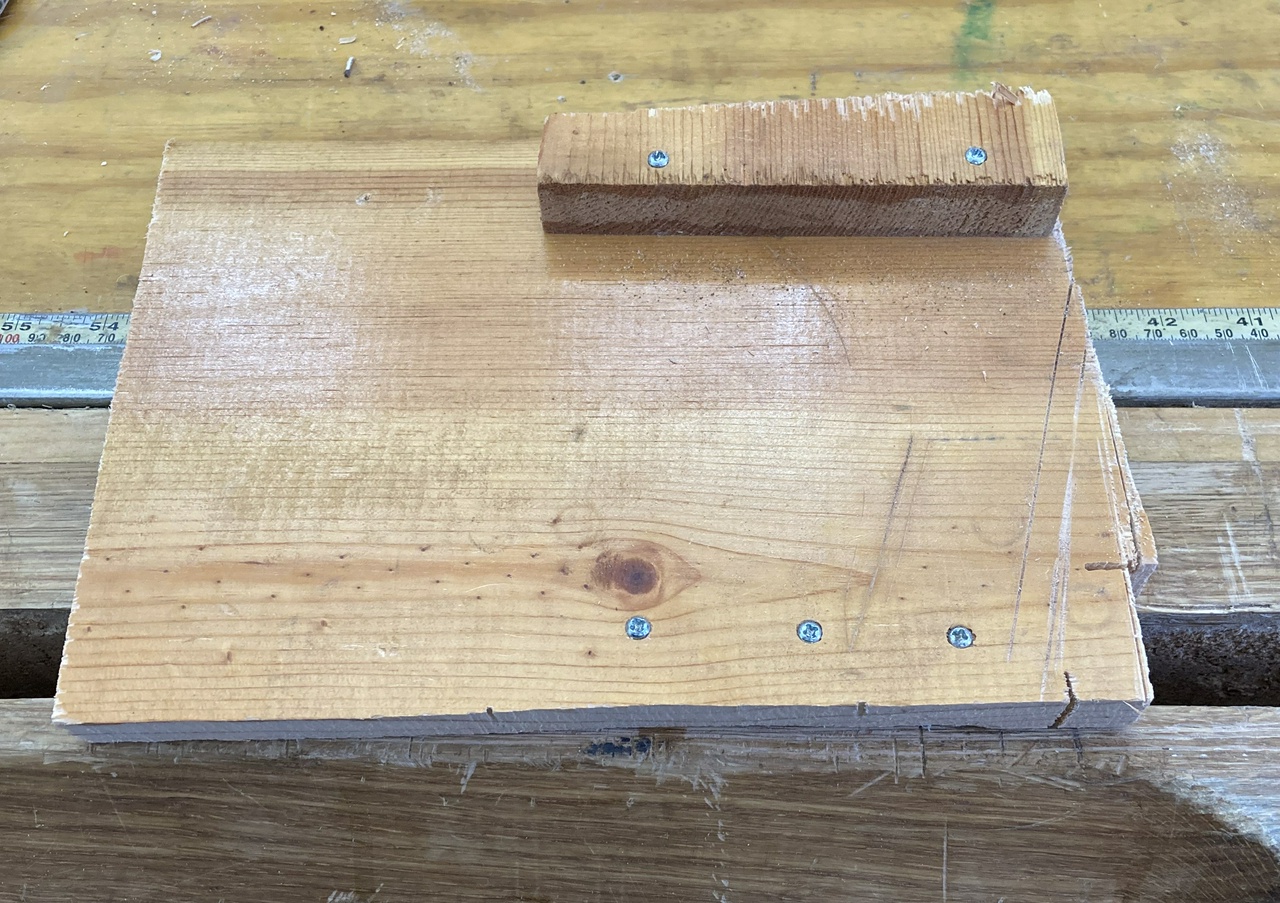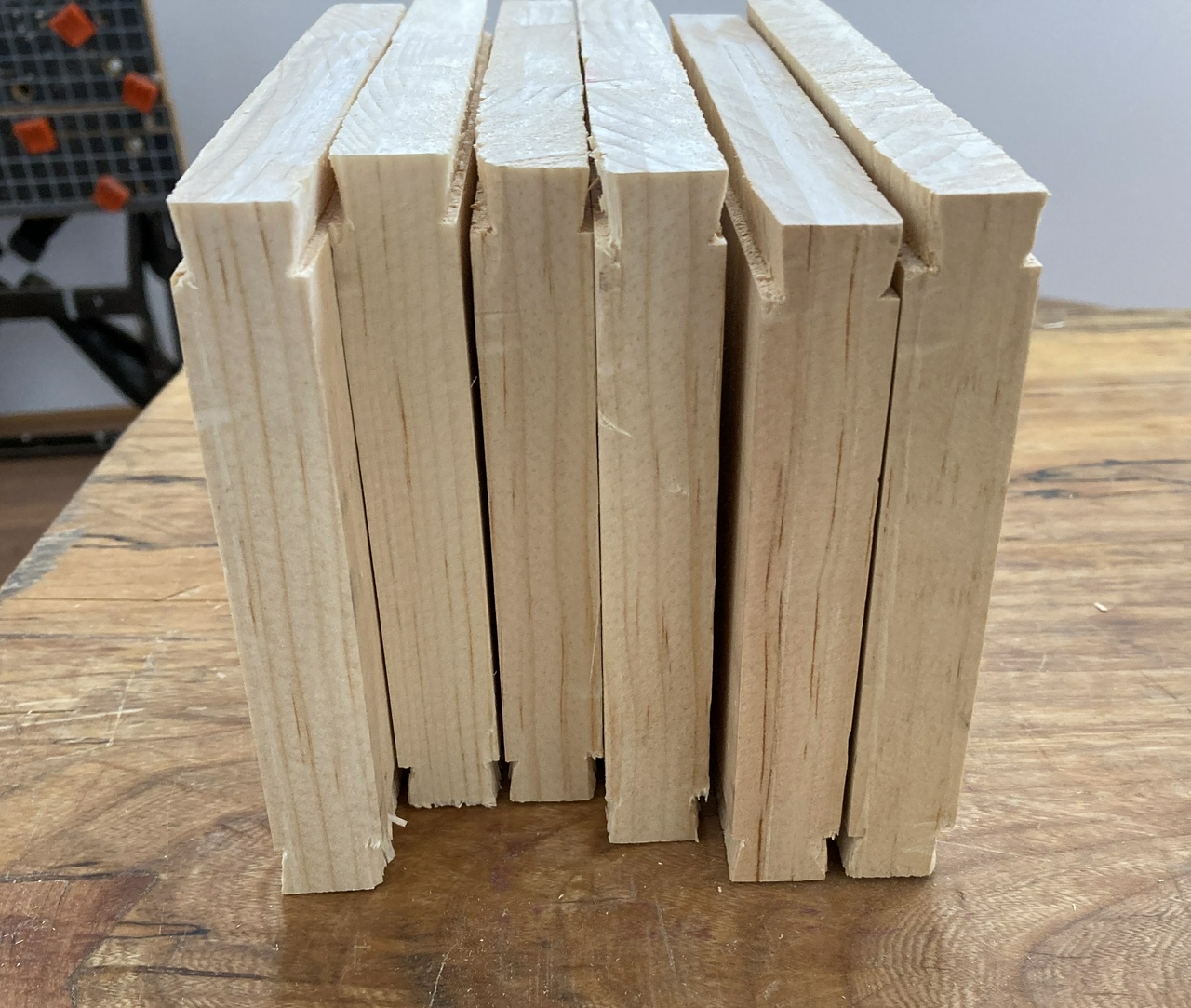Boring Tools Till – Reinforcement, part 1
May 12, 2020
Spent the past few days with a mix of yard work and thinking about how to reinforce the rack that'll hold the braces. With the grain running across, the slots cut into it leave some very weak tongues, which will be almost certain to snap off over time. I've seen this happen with my chisel till, and I'm going to have to rebuild that at some point.

So I thought a bit, and dug through my various piles of shorts. I found a chunk of walnut and decided that running pieces of that from front to back under the tongues would strengthen them in compression, and then I could put some veneer on top (running the same direction) to strengthen the rack in tension. Or looking at it another way, I'm making plywood, with a dang thick core.

My first few test pieces went well yesterday, and I finished cutting them and gluing them up today. I'll give the glue time to dry overnight, and I can plane the ends smooth and chamfer the edges of the holes nicely tomorrow morning. And some 1/16” thick bubinga veneer I ordered should be here in tomorrow evening's mail, so I can glue that onto the top on Thursday.

I also finished cutting all the sliding dovetail sockets today, and will do a test fitting of the carcass tomorrow. I may be able to glue up some sub-assemblies, but we'll have to see how the test fitting goes.
Contents #woodworking #storage #lamination #reinforcement
Discuss... Reply to this in the fediverse: @davepolaschek@writing.exchange






















